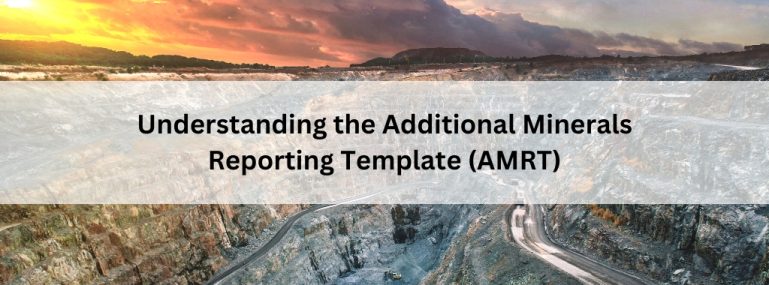The Additional Minerals Reporting Template (AMRT) is a free, standardized tool designed to help businesses collect essential due diligence data on minerals beyond conflict minerals (3TG) and extended minerals (cobalt and mica). Unlike these minerals, which have their own specific reporting templates, the AMRT provides a broader framework for tracking various minerals of concern. Developed by the Responsible Minerals Initiative (RMI), the AMRT enhances supply chain transparency, enabling companies to meet ethical and regulatory standards while ensuring responsible sourcing practices.
Originally introduced as the Pilot Reporting Template (PRT) over two years ago, the tool has now evolved beyond its initial phase and has been officially rebranded as AMRT 1.2.
What Makes AMRT Unique?
The AMRT is a versatile reporting tool that is not limited to specific minerals. Instead, it allows businesses to track up to ten minerals of concern within a single template. This flexibility enables users to define the scope based on their unique supply chain needs.
How Does AMRT Differ from CMRT and EMRT?
Although the AMRT, Conflict Minerals Reporting Template (CMRT), and Extended Minerals Reporting Template (EMRT) share similarities, they serve distinct purposes:
- CMRT: Collects sourcing data on conflict minerals (tin, tungsten, tantalum, and gold – 3TG).
- EMRT: Focuses on extended minerals such as cobalt and mica.
- AMRT: Covers a wider range of minerals, allowing businesses to report on any ten minerals of concern.
Challenges in AMRT Adoption
Despite its benefits, companies face several challenges in implementing the AMRT:
- Limited Awareness: Many suppliers may not be familiar with AMRT requirements or may hesitate to share sourcing details.
- Lack of Training: Smaller businesses, in particular, may struggle with understanding the importance of AMRT and completing it accurately.
- Inconsistent Validation Methods: Without standardized validation processes, data inconsistencies may arise.
- Risk of Incomplete or Inaccurate Submissions: Insufficient training can lead to errors in reporting, impacting data reliability.
Solutions for Effective AMRT Implementation
To address these challenges, companies can take proactive steps:
- Educational Initiatives: Offer training materials, webinars, and workshops to help vendors understand AMRT requirements and due diligence expectations.
- Regular Guidance and Communication: Provide suppliers with clear instructions and reminders regarding AMRT submission requirements and deadlines.
- Automation and Standardization: Utilize software solutions to automate the verification process, ensuring accuracy and consistency in sourcing data.
Applications of AMRT
The AMRT plays a crucial role in ensuring ethical and responsible sourcing by:
- Helping businesses track mineral origins within their supply chains.
- Assisting companies in complying with international regulations such as the Dodd-Frank Act and the EU Conflict Minerals Regulation.
- Standardizing and streamlining the process of collecting, sharing, and analyzing mineral sourcing data.
At ComplianceXL, we offer AMRT regulatory compliance services to help companies collect and manage AMRT data for their products. Our compliance data management approach ensures that supplier certificates and declarations remain updated. Additionally, we provide ongoing maintenance services to validate and preserve regulatory documents, ensuring their accuracy and compliance with industry standards.
FAQs:
1. Which minerals are covered by the AMRT?
The AMRT primarily focuses on minerals that do not fall under the traditional 3TG category but still present ethical or sourcing concerns. This includes minerals like cobalt, mica, and others essential to various industries.
2. How can I access the AMRT?
The AMRT is available for free on the Responsible Minerals Initiative (RMI) website. Companies can download the template and begin using it to report their due diligence information.
By leveraging the AMRT, businesses can strengthen their commitment to ethical sourcing, regulatory compliance, and supply chain transparency.





